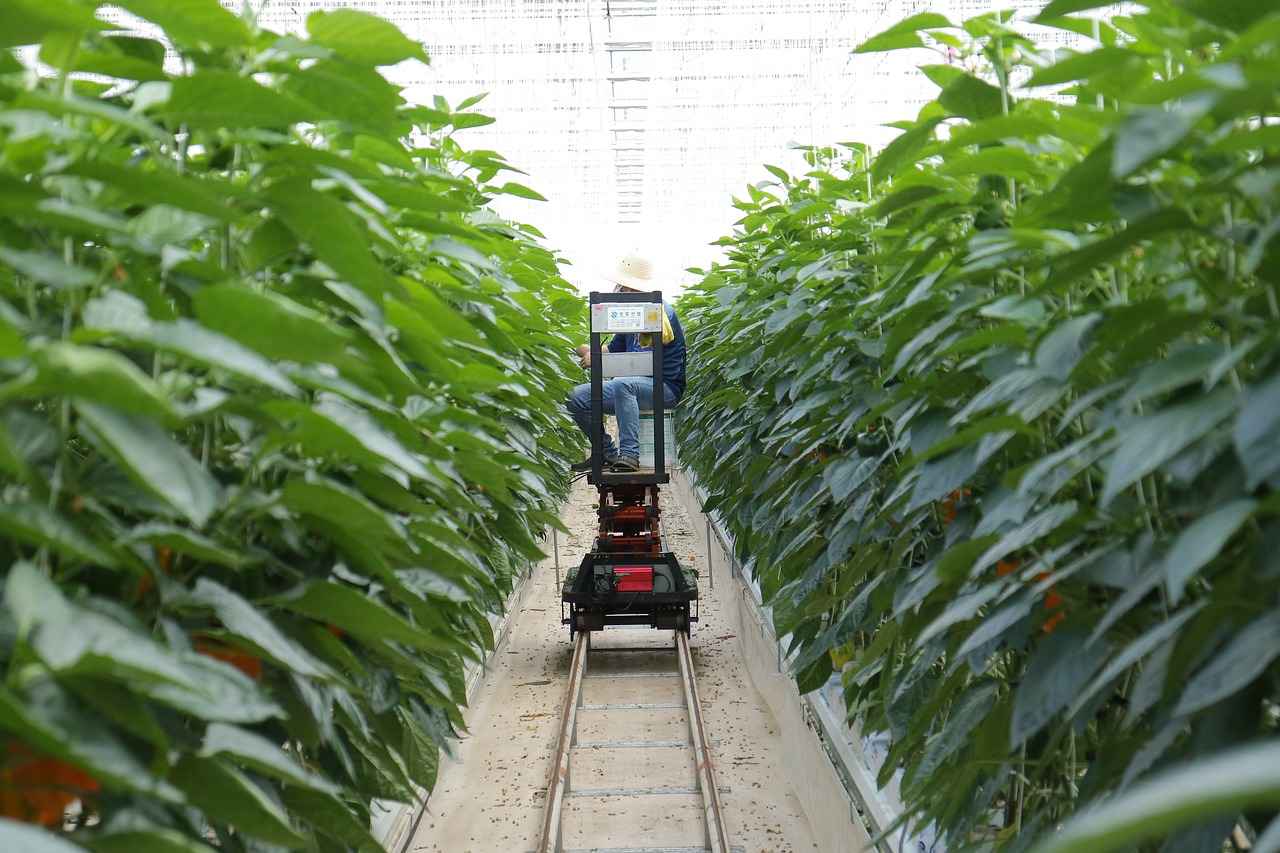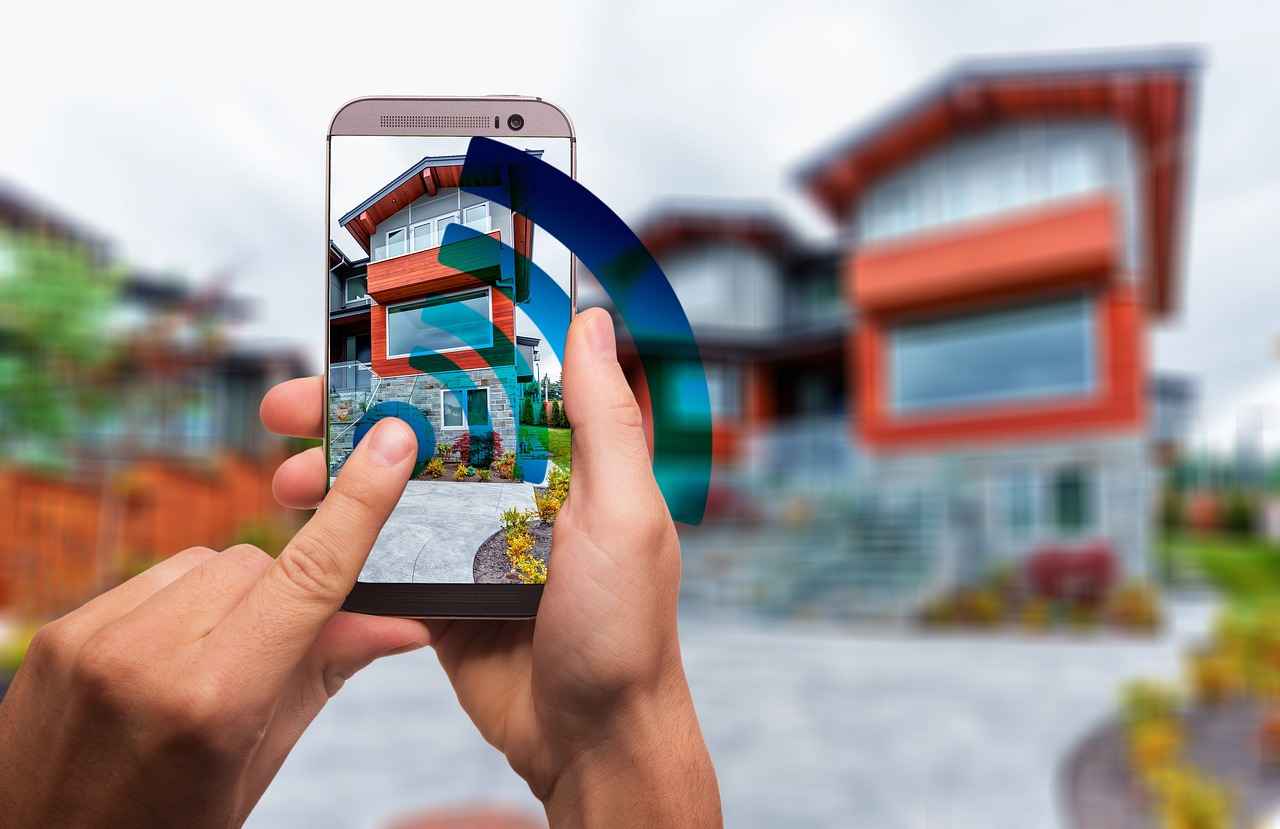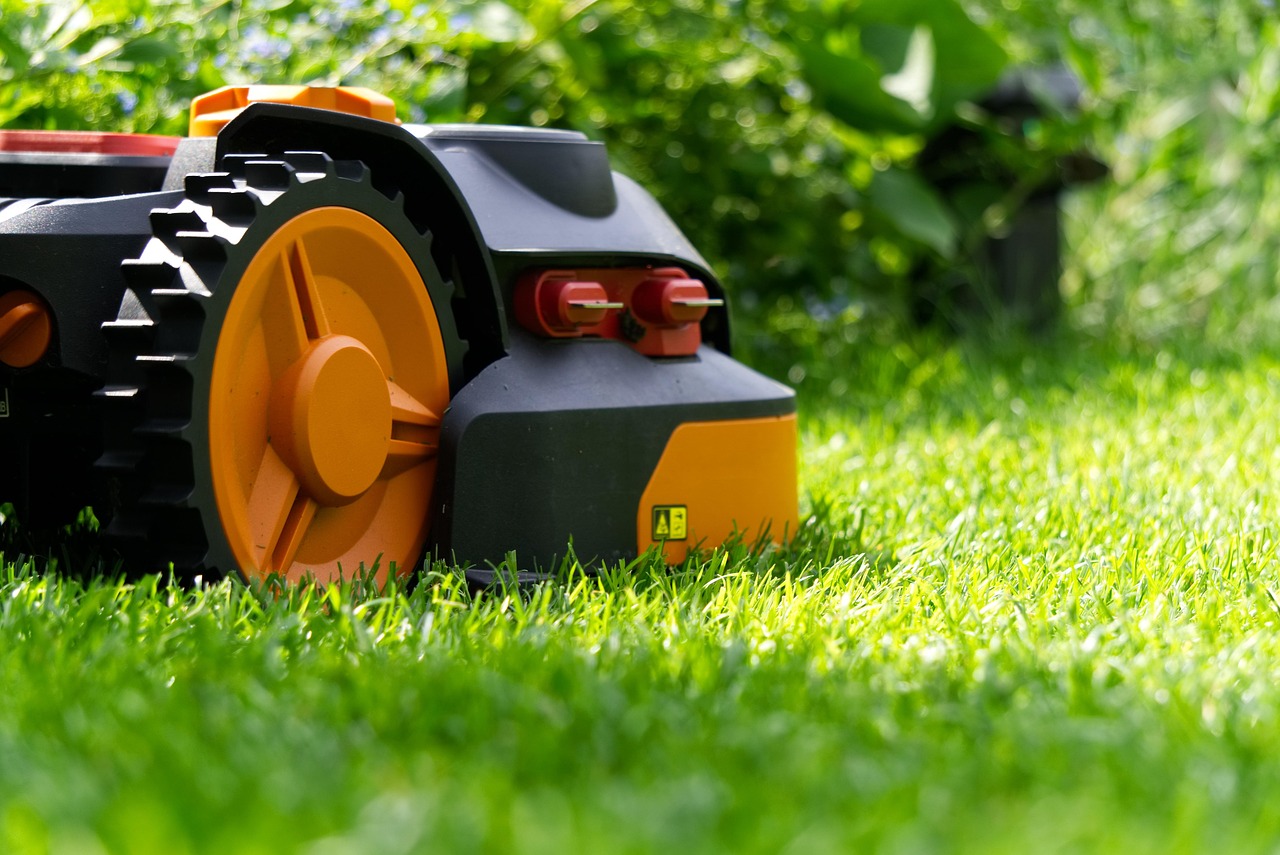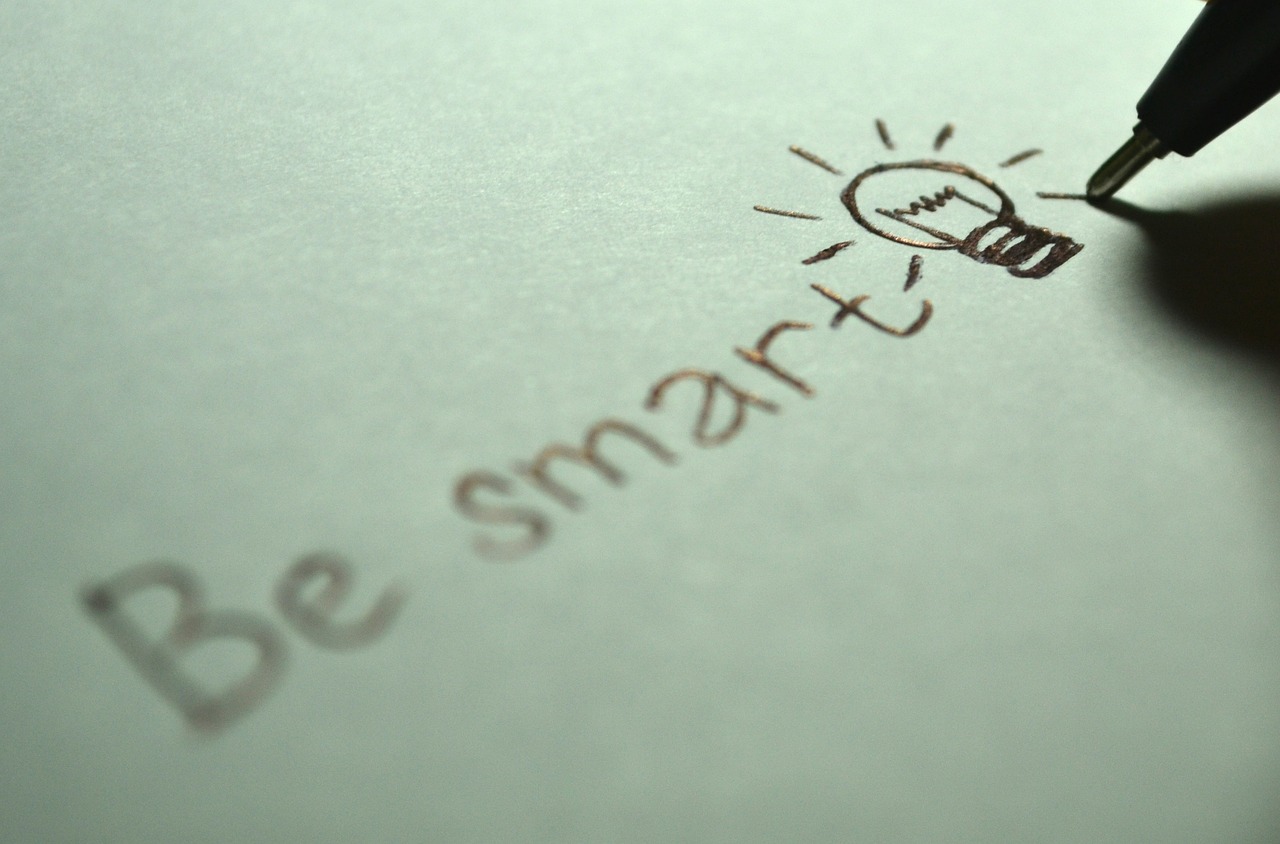This article delves into the world of innovative smart home devices that not only enhance sustainability but also significantly reduce energy consumption and promote eco-friendly living. As we explore how technology can transform your home into an environmentally conscious space, you’ll discover various solutions that make a positive impact on our planet.
1. Introduction to Smart Home Sustainability
The integration of smart home technology is pivotal in promoting sustainability. By adopting these advanced devices, homeowners can effectively lower their carbon footprint and energy usage, all while enjoying the conveniences of modern living.
2. Energy-Efficient Smart Thermostats
Smart thermostats are essential tools for optimizing heating and cooling in your home. They learn your preferences and adjust settings automatically, leading to significant energy savings and improved comfort.
- How Smart Thermostats Work: Utilizing sensors and algorithms, these devices adapt to your habits, ensuring energy is used efficiently.
- Popular Models: Devices like the Nest Learning Thermostat and Ecobee SmartThermostat are renowned for their user-friendly interfaces and energy-saving features.
- Installation: Most smart thermostats come with straightforward installation guides, making them accessible for many homeowners.
3. Smart Lighting Solutions
Smart lighting systems enable remote control of your home’s lighting, allowing for energy savings and a customizable ambiance.
- Functionality: These systems connect to Wi-Fi, allowing control via apps or voice commands, making it easy to schedule and adjust lighting.
- Energy Savings: By utilizing LED technology and automation, smart lighting can significantly decrease energy usage compared to traditional systems.
4. Smart Appliances for Eco-Friendly Living
Smart appliances are designed to optimize energy use, offering features that minimize waste and improve efficiency in daily tasks.
- Convenience: These devices can be programmed to operate during off-peak hours, helping to lower energy costs and environmental impact.
- Leading Brands: Companies like Samsung, LG, and Whirlpool provide a range of smart appliances that integrate seamlessly into modern homes.
5. Water Conservation with Smart Devices
Smart devices also play a crucial role in water conservation, utilizing technology to promote responsible usage.
- Smart Irrigation: Systems that use weather data and soil moisture sensors to optimize watering schedules.
- Leak Detection: Sensors that alert homeowners to leaks, preventing waste and costly damage.
6. Smart Home Energy Monitors
Energy monitors provide real-time insights into energy consumption, helping homeowners identify areas for improvement and implement energy-saving strategies.
- Functionality: These devices connect to electrical panels, measuring energy usage and providing valuable data.
- Benefits: They empower homeowners to take control of their consumption, leading to reduced bills and a smaller carbon footprint.
7. The Role of Smart Home Hubs
Smart home hubs serve as central control points for connected devices, enhancing management and energy efficiency.
- Popular Hubs: Devices like Amazon Echo and Google Nest Hub allow for streamlined control of multiple devices.
- Integration: By connecting various devices through a hub, homeowners can create automated routines that promote energy efficiency.
8. The Future of Smart Home Sustainability
As technology evolves, the potential for smart home devices to contribute to sustainable living will expand. Innovations in energy management will redefine our interaction with our homes.
- Emerging Technologies: Advancements in AI and IoT are set to revolutionize smart home sustainability, enabling greater automation and efficiency.
- Investing in Sustainability: By adopting these innovative solutions, homeowners can play a crucial role in environmental conservation.
9. Conclusion: Embracing Smart Home Sustainability
In conclusion, smart home devices offer practical solutions for living sustainably. By incorporating these technologies, homeowners can significantly reduce their environmental impact while enjoying the conveniences of modern life.

1. Introduction to Smart Home Sustainability
Smart home technology is revolutionizing the way we interact with our living spaces, and its impact on sustainability is profound. As the world grapples with the challenges of climate change and resource depletion, integrating smart devices into our homes offers a pathway towards a more sustainable future. By adopting these technologies, homeowners can not only enhance their daily lives but also contribute to a healthier planet.
In this article, we will explore the various smart home devices that promote sustainability, focusing on their functionalities and benefits. From energy-efficient appliances to smart irrigation systems, these innovations are designed to minimize waste and create a more eco-friendly living environment.
One of the most impactful smart devices for sustainability is the smart thermostat. These devices learn your heating and cooling preferences, adjusting settings automatically to optimize energy use. As a result, homeowners can enjoy significant reductions in energy consumption and costs.
Smart thermostats utilize advanced algorithms and sensors to analyze your habits. They adjust the temperature based on when you are home or away, ensuring that energy is used efficiently without sacrificing comfort.
- Energy Savings: Reduce your monthly energy bills.
- Comfort: Maintain a consistent and comfortable home environment.
- Remote Control: Manage your home’s climate from anywhere via smartphone apps.
Smart lighting systems are another essential component of sustainable living. They allow users to control lighting remotely, reducing energy consumption and enhancing the ambiance of their homes.
These systems connect to your home Wi-Fi, enabling control through apps or voice commands. Users can schedule lighting, adjust brightness, and even change colors to suit their mood.
Smart appliances, such as refrigerators and washing machines, are designed to optimize energy use. They often come with features that allow them to operate during off-peak hours, further reducing their environmental impact.
Water conservation is crucial for sustainability, and smart devices can play a significant role. Smart irrigation systems and leak detection sensors help homeowners manage their water usage effectively.
In conclusion, the integration of smart home technology is a vital step towards promoting sustainability. By adopting these innovative solutions, homeowners can significantly reduce their environmental footprint while enjoying the conveniences of modern living. The future of our planet depends on our ability to make smart choices today.

2. Energy-Efficient Smart Thermostats
Energy-Efficient Smart Thermostats are revolutionizing the way we manage heating and cooling in our homes. These innovative devices not only enhance comfort but also play a significant role in reducing energy consumption and costs. By learning user preferences and adapting to daily routines, smart thermostats offer a seamless blend of convenience and efficiency.
One of the key features of smart thermostats is their ability to learn from user behavior. Over time, these devices analyze patterns in temperature settings and occupancy, allowing them to adjust heating and cooling automatically. This ensures that energy is used efficiently, minimizing waste and ultimately leading to lower utility bills.
| Feature | Description |
|---|---|
| Adaptive Learning | Smart thermostats learn your schedule and preferences, adjusting settings for optimal comfort. |
| Remote Control | Control your home’s temperature from anywhere using a smartphone app. |
| Energy Reports | Receive insights on energy usage to help identify opportunities for savings. |
Popular models such as the Nest Learning Thermostat and Ecobee SmartThermostat have gained widespread acclaim for their user-friendly interfaces and advanced features. These devices not only optimize energy use but also contribute to a more sustainable lifestyle by reducing carbon footprints.
Installing a smart thermostat is generally straightforward and can often be done by homeowners themselves. Many manufacturers provide detailed instructions and support, making it accessible for everyone. Once installed, users can enjoy the benefits of a more comfortable and energy-efficient home.
In conclusion, energy-efficient smart thermostats are an essential component of modern smart home technology. They not only enhance comfort and convenience but also promote sustainability by significantly reducing energy consumption. Embracing these devices is a step towards a more eco-friendly lifestyle.
2.1. How Smart Thermostats Work
Smart thermostats are revolutionizing the way we manage our home heating and cooling systems. By utilizing advanced sensors and sophisticated algorithms, these devices can learn your daily habits and preferences, adapting the temperature settings accordingly. This not only enhances comfort but also promotes energy efficiency.
At the heart of a smart thermostat’s functionality is its ability to gather data. It monitors factors such as:
- Current indoor temperature
- Outdoor weather conditions
- Time of day
- Occupancy patterns
By analyzing this information, smart thermostats can make informed decisions about when to heat or cool your home. For instance, if the device detects that no one is home, it can automatically adjust the temperature to save energy, ensuring that you’re not heating or cooling an empty house.
Moreover, many smart thermostats come equipped with geofencing technology. This feature allows the thermostat to track your smartphone’s location, so it can adjust the temperature before you even arrive home. Imagine walking into a perfectly climate-controlled environment after a long day—this technology makes it possible.
Additionally, smart thermostats can be controlled remotely via smartphone apps, giving you the flexibility to adjust settings from anywhere. This means that if you forget to turn down the heat before leaving for vacation, you can do it with just a few taps on your phone.
In conclusion, smart thermostats represent a significant advancement in home climate control. By learning your habits and utilizing real-time data, they not only enhance comfort but also promote sustainability by reducing energy waste. Investing in a smart thermostat is a step towards a more efficient and eco-friendly home.
2.1.1. Popular Smart Thermostat Models
When it comes to enhancing energy efficiency in your home, smart thermostats are among the most effective tools available. Two leading models that have gained significant attention for their innovative features and user-friendly interfaces are the Nest Learning Thermostat and the Ecobee SmartThermostat. These devices not only help conserve energy but also offer a range of functionalities that cater to the needs of modern homeowners.
- Nest Learning Thermostat
- Adaptive Learning: This thermostat learns your heating and cooling preferences over time, adjusting automatically to maintain optimal comfort while minimizing energy use.
- Remote Access: Users can control their Nest thermostat from anywhere using a smartphone app, allowing for adjustments even when away from home.
- Energy Reports: Nest provides monthly reports on energy usage, helping homeowners understand their consumption patterns and encouraging energy-saving habits.
- Ecobee SmartThermostat
- Room Sensors: Ecobee includes sensors that detect occupancy and temperature in different rooms, ensuring balanced heating and cooling throughout the home.
- Voice Control: This model integrates with voice assistants like Alexa, allowing for hands-free temperature adjustments and smart home integration.
- Energy Savings: Ecobee claims that users can save up to 26% on heating and cooling costs annually, making it a financially savvy choice for eco-conscious homeowners.
Both models stand out due to their intuitive designs and advanced functionalities. They not only contribute to reducing your carbon footprint but also enhance your overall home comfort. Choosing the right smart thermostat can lead to significant energy savings and a more sustainable lifestyle.
2.1.2. Installation and Setup
Installing a smart thermostat is a straightforward process that typically involves removing your old thermostat and replacing it with the new smart model. This transition not only enhances your home’s energy efficiency but also introduces a level of convenience that traditional thermostats lack.
Before you begin the installation, it is important to gather the necessary tools, which usually include a screwdriver, a drill, and possibly a level. Here’s a step-by-step guide to help you:
- Turn Off Power: Safety first! Ensure that the power to your heating and cooling system is turned off at the circuit breaker to avoid any electrical hazards.
- Remove the Old Thermostat: Carefully detach your existing thermostat from the wall. Take note of the wiring configuration, as you will need this information for your new device.
- Connect the Wires: Follow the user-friendly guide provided by the smart thermostat manufacturer. Typically, you will connect wires to corresponding terminals. Color coding helps in identifying which wire goes where.
- Mount the New Thermostat: Secure the new thermostat to the wall, ensuring it is level for accurate readings. Most models come with mounting hardware.
- Power On and Configure: Restore power to your system, and follow the on-screen instructions to connect your thermostat to Wi-Fi and set your preferences.
Many brands, such as Nest and Ecobee, provide detailed setup videos and manuals that can guide you through the installation process. These resources make it accessible for most homeowners, regardless of their technical expertise.
Once installed, your smart thermostat will begin to learn your heating and cooling preferences, adjusting settings automatically to optimize energy use. This not only promotes a comfortable living environment but also contributes to a more sustainable lifestyle by reducing energy consumption.
In conclusion, the installation of a smart thermostat is a manageable DIY project that offers significant benefits. With the right guidance and a little patience, you can enhance your home’s energy efficiency and enjoy the modern conveniences that come with smart technology.
2.2. Benefits of Smart Thermostats
The advantages of smart thermostats are numerous, extending well beyond mere energy savings. These innovative devices are designed to enhance your home’s comfort, convenience, and efficiency. Here are some key benefits:
- Enhanced Comfort: Smart thermostats learn your preferences over time, adjusting the temperature based on your daily routines. This means you can come home to a perfectly cozy environment, no matter the season.
- Remote Control: With the ability to control your thermostat from anywhere using a smartphone app, you can easily adjust your home’s temperature while on the go. Forgot to turn down the heat before leaving for vacation? No problem!
- Energy Efficiency: By optimizing heating and cooling schedules, smart thermostats can significantly reduce energy consumption. They can even provide insights into your energy usage, helping you make informed decisions to save on utility bills.
- Integration with Smart Home Systems: Many smart thermostats can seamlessly integrate with other smart home devices, such as smart lights and security systems. This allows for automated routines that enhance overall energy efficiency.
- Environmental Impact: By reducing energy consumption, smart thermostats contribute to a lower carbon footprint. This not only benefits your wallet but also helps the environment by conserving natural resources.
In summary, smart thermostats offer a range of benefits that enhance both comfort and efficiency in your home. By investing in this technology, homeowners are not only improving their living conditions but also making a positive impact on the environment.

3. Smart Lighting Solutions
Smart Lighting Solutions have revolutionized the way we illuminate our homes. These advanced systems not only enhance the aesthetic appeal of our living spaces but also contribute significantly to energy efficiency and sustainability. Let’s explore the multifaceted benefits of smart lighting and how it can be tailored to meet individual needs.
At the core of smart lighting solutions is the ability to control lighting remotely through a smartphone app or voice commands. This connectivity allows users to adjust brightness, change colors, and set schedules with ease. By utilizing LED technology, these systems are designed to consume less energy compared to traditional lighting options, leading to lower electricity bills and a reduced carbon footprint.
- Remote Control: Users can manage their lighting from anywhere, providing convenience and security.
- Energy Efficiency: Smart lighting systems can automatically turn off lights when a room is unoccupied, significantly reducing energy consumption.
- Customization: Users can create personalized lighting scenes to suit different moods or activities, enhancing the ambiance of their homes.
- Integration with Other Smart Devices: Smart lighting can be integrated with other smart home systems, such as security alarms and thermostats, for a cohesive smart home experience.
When selecting a smart lighting solution, consider factors such as compatibility with existing smart home devices, ease of installation, and user interface. Popular options include Philips Hue, LIFX, and Wyze, each offering unique features that cater to different preferences.
In conclusion, smart lighting solutions are an essential component of a modern, sustainable home. By embracing this technology, homeowners can enjoy enhanced convenience, significant energy savings, and a customizable living environment that promotes well-being and comfort.
3.1. How Smart Lighting Works
Smart lighting systems have revolutionized the way we manage and interact with the lighting in our homes. By connecting to your home Wi-Fi network, these systems provide a seamless integration of technology into your daily life. Users can easily control their lights through smartphone applications or voice commands via virtual assistants like Amazon Alexa or Google Assistant.
One of the key features of smart lighting is the ability to schedule lights. This means you can set your lights to turn on or off at specific times, which is particularly useful for enhancing security when you are away from home. For instance, you can program your living room lights to turn on at sunset, creating the illusion that someone is home.
In addition to scheduling, smart lighting allows users to adjust brightness levels according to their needs. Whether you want a bright light for reading or a dim setting for movie nights, these systems can cater to various scenarios. Furthermore, many smart lighting systems offer a wide range of color options, enabling users to customize the ambiance of their space. With just a few taps on your smartphone, you can change the color of your lights to match your mood or the occasion.
Moreover, smart lighting is often designed with energy efficiency in mind. By utilizing LED bulbs and automation, these systems can significantly reduce energy consumption compared to traditional lighting solutions. This not only helps in lowering your energy bills but also contributes to a more sustainable home environment.
In conclusion, smart lighting systems provide a blend of convenience, customization, and energy efficiency. With their ability to connect to home networks and be controlled remotely, they are an essential component of modern smart homes, making daily life easier and more enjoyable.
3.2. Energy Savings with Smart Lighting
Smart lighting solutions represent a significant leap forward in energy efficiency, especially when compared to traditional lighting systems. By utilizing LED bulbs and advanced automation, these systems can lead to remarkable reductions in energy consumption, thereby fostering a more sustainable home environment.
How Smart Lighting Contributes to Energy Savings
- LED Technology: LED bulbs consume up to 80% less energy than incandescent bulbs, translating to lower electricity bills and reduced carbon emissions.
- Automated Controls: Smart lighting systems can be programmed to turn off automatically when not in use, ensuring that lights are only on when needed.
- Remote Management: Users can control their lighting from anywhere via smartphone apps, allowing them to turn off lights they may have forgotten about.
- Adaptive Lighting: Some smart lighting solutions adjust brightness based on natural light levels, minimizing energy use during the day.
Benefits of Smart Lighting Beyond Energy Savings
In addition to energy savings, smart lighting enhances the overall living experience. Homeowners can create customized lighting scenes for different activities, such as reading, watching movies, or entertaining guests. This not only improves ambiance but also promotes well-being.
Conclusion
In summary, the integration of smart lighting systems in homes not only contributes to significant energy savings but also enhances the quality of life for residents. By adopting these innovative technologies, homeowners can enjoy a more sustainable lifestyle while benefiting from the convenience and flexibility that smart lighting offers.

4. Smart Appliances for Eco-Friendly Living
Smart Appliances for Eco-Friendly Living
In today’s world, where sustainability is becoming increasingly crucial, smart appliances are at the forefront of eco-friendly living. These innovative devices, including refrigerators, washers, and dryers, are designed to optimize energy use and minimize waste. By integrating cutting-edge technology, smart appliances not only enhance daily convenience but also contribute significantly to reducing your household’s environmental impact.
- Energy Efficiency: Smart appliances are engineered to use less energy compared to traditional models. They often come with features such as energy monitoring, which allows users to track and manage their energy consumption effectively.
- Automated Scheduling: Many smart appliances can be programmed to operate during off-peak hours, taking advantage of lower energy rates and reducing strain on the power grid. For instance, washing machines can be set to run late at night, aligning with energy-saving initiatives.
- Smart Sensors: These appliances are equipped with advanced sensors that detect load sizes and adjust water and energy usage accordingly. This ensures that you are not wasting resources, making every wash or cool cycle as efficient as possible.
Popular Smart Appliance Brands
Several brands are leading the way in the smart appliance market:
- Samsung: Known for its innovative features, Samsung’s smart refrigerators and washers are designed to integrate seamlessly with your home network.
- LG: LG offers a range of smart appliances that include energy-saving modes and remote control capabilities, making them ideal for eco-conscious consumers.
- Whirlpool: Whirlpool focuses on user-friendly designs that promote energy efficiency without compromising on performance.
In conclusion, smart appliances play a vital role in promoting sustainable living. By choosing these energy-efficient devices, homeowners can significantly reduce their carbon footprint while enjoying modern conveniences. Investing in smart appliances is not just a trend; it is a commitment to a more sustainable future.
4.1. Benefits of Smart Appliances
Benefits of Smart Appliances
In today’s rapidly evolving technological landscape, smart appliances have emerged as essential tools for enhancing efficiency and sustainability in our homes. These devices are designed not only to simplify our daily tasks but also to optimize energy usage, resulting in significant cost savings and a reduced environmental footprint.
- Convenience and Automation: Smart appliances can be programmed and controlled remotely through smartphone apps. This allows users to manage their devices from anywhere, ensuring that tasks like laundry or cooking can be initiated at the most convenient times.
- Energy Efficiency: Many smart appliances are equipped with advanced technology that enables them to operate more efficiently than traditional models. For instance, smart refrigerators can adjust their cooling levels based on usage patterns, while smart washers can optimize water and energy consumption.
- Off-Peak Operation: One of the standout features of smart appliances is their ability to be programmed to operate during off-peak hours. This not only helps in reducing energy costs but also lessens the strain on the electrical grid during peak demand times, contributing to a more stable energy environment.
- Environmental Impact: By minimizing energy use and waste, smart appliances play a crucial role in reducing the overall carbon footprint of households. This shift towards eco-friendly options is vital in the fight against climate change.
- Smart Diagnostics: Many smart appliances come with self-diagnosing features that can alert users to potential issues before they become major problems. This proactive approach to maintenance can prolong the lifespan of devices and reduce waste.
In summary, the integration of smart appliances into our homes not only enhances convenience but also promotes a more sustainable lifestyle. By leveraging technology to optimize energy use and reduce waste, homeowners can contribute to a healthier planet while enjoying the benefits of modern living.
4.2. Popular Smart Appliance Brands
In today’s rapidly evolving technological landscape, several brands have emerged as leaders in the realm of smart appliances. These brands not only focus on innovation but also prioritize sustainability and user-friendly features. Here, we explore some of the most popular brands that are making significant strides in the smart appliance market.
- Samsung: Renowned for its cutting-edge technology, Samsung offers a diverse range of smart appliances, including refrigerators, washers, and ovens. Their SmartThings platform allows users to control their appliances remotely, enabling energy-efficient operation and seamless integration into smart home ecosystems.
- LG: LG is committed to enhancing the user experience with its smart appliances. Their ThinQ technology enables appliances to learn from user habits, optimizing performance and reducing energy consumption. LG’s smart refrigerators come with features like smart diagnosis and energy monitoring, making them a popular choice for eco-conscious consumers.
- Whirlpool: With a focus on sustainability, Whirlpool’s smart appliances are designed to help users save energy and water. Their Smart Appliance line includes washers and dryers that can be scheduled to run during off-peak hours, thus lowering utility costs. Whirlpool’s intuitive app allows for easy monitoring and control of appliances from anywhere.
- GE Appliances: General Electric (GE) Appliances is another key player in the smart appliance market. Their GE Appliances app provides users with the ability to control and monitor their appliances remotely. GE’s smart ovens and refrigerators are designed to enhance cooking efficiency while promoting energy conservation.
- Bosch: Known for their quality and reliability, Bosch offers a range of smart kitchen appliances that integrate seamlessly with home automation systems. Their smart dishwashers and cooking appliances are engineered for both performance and sustainability, making them ideal for the modern eco-conscious home.
These brands exemplify the integration of technology and sustainability in smart home appliances. By choosing products from these manufacturers, homeowners can enjoy modern conveniences while actively contributing to a more sustainable future.

5. Water Conservation with Smart Devices
In today’s world, where water scarcity is becoming increasingly prevalent, smart devices offer innovative solutions to help conserve this precious resource. By utilizing advanced technology, homeowners can monitor and manage their water usage more effectively, ensuring that every drop counts.
5.1. Smart Irrigation Systems
One of the most significant advancements in water conservation is the development of smart irrigation systems. These systems leverage weather data and soil moisture sensors to create efficient watering schedules. This means that plants receive the right amount of water at the right time, minimizing waste and promoting healthy growth. For instance, when it rains, these systems can automatically adjust to prevent overwatering, thus conserving water and saving homeowners money on their water bills.
5.2. Leak Detection Sensors
Another essential technology in water conservation is leak detection sensors. These devices monitor your plumbing system for any signs of leaks or drips. By providing real-time alerts, they enable homeowners to address potential issues before they escalate into costly repairs and significant water loss. Early detection can save thousands of gallons of water, making these sensors a critical component of a sustainable home.
5.3. Smart Water Meters
Smart water meters offer another layer of control by providing detailed insights into water consumption patterns. Homeowners can track their usage in real-time through mobile apps, allowing them to identify areas where they can cut back. By understanding their water habits, families can make informed decisions about their consumption, leading to more responsible usage and conservation efforts.
5.4. Benefits of Smart Water Devices
- Cost Savings: Reducing water waste translates to lower utility bills.
- Environmental Impact: Conserving water helps protect local ecosystems and reduces the strain on municipal water supplies.
- Convenience: Smart devices offer remote management, allowing users to control their systems from anywhere.
In conclusion, integrating smart devices into your home not only promotes responsible water usage but also contributes to a more sustainable lifestyle. By adopting these technologies, homeowners can play a vital role in conserving water and protecting our environment.
5.1. Smart Irrigation Systems
In an era where water conservation is more critical than ever, smart irrigation systems have emerged as a revolutionary solution for efficient water management in gardens and landscapes. These advanced systems leverage weather data and soil moisture sensors to optimize watering schedules, ensuring that plants receive the hydration they need while minimizing water waste.
By utilizing real-time data, smart irrigation systems can adjust their watering schedules based on current weather conditions. For instance, if rain is forecasted, the system can automatically delay watering, preventing unnecessary water usage. This not only conserves water but also promotes healthier plant growth by preventing overwatering.
Additionally, soil moisture sensors play a pivotal role in these systems. They measure the moisture levels in the soil and communicate this information back to the irrigation controller. If the soil is adequately moist, the system will withhold water, ensuring that plants are not over-saturated. This technology is particularly beneficial for homeowners looking to maintain lush gardens while adhering to environmental sustainability practices.
| Feature | Benefit |
|---|---|
| Weather Data Integration | Automatically adjusts watering schedules based on rainfall and temperature. |
| Soil Moisture Sensors | Prevents overwatering by measuring soil moisture levels. |
| Remote Control | Allows users to manage irrigation from their smartphones. |
Moreover, many smart irrigation systems come equipped with mobile applications, enabling users to control and monitor their irrigation remotely. This feature provides convenience and peace of mind, especially for those who travel frequently or have busy schedules.
In conclusion, smart irrigation systems represent a significant advancement in sustainable landscaping. By combining technology with eco-friendly practices, homeowners can maintain beautiful gardens while conserving precious water resources. Investing in such systems not only benefits the environment but also leads to long-term savings on water bills.
5.2. Leak Detection Sensors
In today’s world, where water conservation is becoming increasingly critical, leak detection sensors play an essential role in safeguarding homes from potential water damage. These innovative devices are designed to detect leaks early, providing homeowners with timely alerts that can prevent significant water waste and costly repairs.
Leak detection sensors typically operate using advanced technology that can identify moisture levels and changes in environmental conditions. When a leak is detected, these sensors send immediate notifications to the homeowner’s smartphone or smart home system, allowing for quick action. This proactive approach not only helps in preventing water damage but also contributes to a more sustainable living environment by conserving this precious resource.
- Cost Savings: By alerting homeowners to leaks quickly, these sensors help reduce water bills and prevent expensive repairs.
- Easy Installation: Many leak detection sensors are user-friendly and can be easily installed in various locations, such as under sinks, near water heaters, and in basements.
- Integration with Smart Home Systems: These devices can seamlessly integrate with existing smart home technology, allowing for enhanced monitoring and control.
Moreover, the implementation of leak detection sensors can significantly enhance a household’s overall sustainability. By minimizing water waste, homeowners can contribute to environmental conservation efforts while also enjoying peace of mind knowing their property is protected. As technology continues to evolve, the capabilities of these sensors are expected to improve, providing even greater efficiency in leak detection and response.
In conclusion, leak detection sensors are invaluable tools for modern homeowners. They not only help in preventing water damage but also promote a more sustainable lifestyle by conserving water. Investing in these devices is a smart choice for those looking to enhance their home’s safety and environmental responsibility.

6. Smart Home Energy Monitors
Smart Home Energy Monitors are becoming increasingly essential for homeowners who wish to optimize their energy consumption. These devices offer real-time insights into the energy usage of your home, allowing you to monitor and manage your consumption effectively.
Energy monitors are designed to connect directly to your electrical panel, tracking the energy usage of various appliances and devices. By providing detailed data on your energy consumption patterns, these monitors enable homeowners to identify which devices consume the most energy and when usage peaks occur.
Most energy monitors utilize advanced sensors and software to analyze your home’s energy flow. They can often be accessed via smartphone applications, providing a user-friendly interface for monitoring consumption. This accessibility allows homeowners to make informed decisions regarding their energy usage, leading to better energy management.
- Cost Savings: By identifying high-energy-consuming devices, homeowners can take steps to reduce usage, leading to lower electricity bills.
- Environmental Impact: Understanding energy consumption helps in reducing your carbon footprint, contributing to a more sustainable lifestyle.
- Enhanced Awareness: Real-time data fosters a greater awareness of energy usage habits, encouraging more responsible consumption.
To maximize the benefits of energy monitors, consider the following:
- Set energy-saving goals based on your monitor’s data.
- Use automation features to schedule appliances during off-peak hours.
- Regularly review your energy usage reports to track improvements.
As technology continues to advance, smart home energy monitors will play a pivotal role in promoting energy efficiency. By adopting these devices, homeowners can not only save money but also contribute to a more sustainable future.
6.1. How Energy Monitors Work
Energy monitors are essential tools designed to provide homeowners with a comprehensive view of their energy consumption. By connecting directly to your electrical panel, these devices offer detailed insights into how much energy various appliances and systems are using in real time.
Understanding how energy monitors work can empower you to make informed choices about your energy usage and promote a more sustainable lifestyle.
Energy monitors typically employ sensors that measure the electrical current flowing through your home’s wiring. This data is then transmitted to a connected device, such as a smartphone or a computer, allowing you to monitor your energy consumption from anywhere.
- Data Collection: Energy monitors collect data on the energy usage of individual devices, providing a breakdown of consumption patterns.
- Real-Time Monitoring: Many energy monitors offer real-time monitoring, enabling users to see how much energy is being consumed at any given moment.
- Historical Analysis: Users can access historical data to track energy usage trends over time, which is crucial for identifying areas for improvement.
By analyzing this information, homeowners can pinpoint which devices are energy hogs and adjust their usage accordingly. For example, if you notice that your refrigerator is consuming more energy than expected, you may consider scheduling maintenance or replacing it with a more efficient model.
Using energy monitors not only helps in understanding your energy consumption but also promotes energy efficiency. Here are some of the key benefits:
- Cost Savings: By identifying high-energy devices, users can reduce their electricity bills.
- Environmental Impact: Lower energy consumption contributes to a reduced carbon footprint, promoting a healthier planet.
- Informed Decisions: With detailed insights, homeowners can make better choices regarding energy usage and investments in energy-efficient appliances.
In conclusion, energy monitors serve as a powerful tool for anyone looking to enhance their energy efficiency and contribute to a more sustainable future. By leveraging the data provided by these devices, homeowners can take actionable steps towards reducing their energy consumption and saving money.
6.2. Benefits of Using Energy Monitors
Energy monitors are becoming an essential tool for homeowners who wish to enhance their energy efficiency and promote sustainable living. These devices offer a variety of benefits that can lead to significant savings and a reduced environmental impact.
- Real-Time Insights: Energy monitors provide homeowners with real-time data on their energy consumption. This immediate feedback helps users identify which appliances use the most energy, allowing for informed decisions regarding usage.
- Cost Savings: By tracking energy consumption patterns, homeowners can pinpoint areas where they can cut back. This leads to reduced utility bills as users become more conscious of their energy usage.
- Behavioral Changes: Awareness is key to sustainable living. Energy monitors encourage homeowners to adopt more sustainable habits. For instance, knowing when energy use peaks can prompt users to adjust their habits, such as running dishwashers or washing machines during off-peak hours.
- Environmental Impact: By reducing energy consumption, homeowners contribute to a smaller carbon footprint. This is crucial for combating climate change and promoting environmental sustainability.
- Integration with Smart Home Systems: Many energy monitors can integrate seamlessly with existing smart home devices, allowing for enhanced automation. This means users can set up routines that optimize energy use based on real-time data.
- Alerts and Notifications: Energy monitors can send alerts when energy usage exceeds a certain threshold, helping homeowners stay within their budget and encouraging them to take action to reduce consumption.
In summary, energy monitors empower homeowners to take control of their energy consumption. By providing valuable insights and promoting awareness, these devices not only lead to reduced bills but also foster a more sustainable lifestyle.

7. The Role of Smart Home Hubs
The Role of Smart Home Hubs
Smart home hubs serve as the central control points for all connected devices within a household, effectively streamlining management and enhancing energy efficiency. These hubs are essential for improving the overall functionality of smart home systems, allowing users to control multiple devices through a single interface.
1. What is a Smart Home Hub?
A smart home hub is a device that connects and communicates with various smart devices in your home, such as lights, thermostats, and security systems. It acts as a bridge between these devices, enabling them to work together seamlessly.
2. Benefits of Using a Smart Home Hub
- Centralized Control: Manage all smart devices from one app or interface, simplifying the user experience.
- Automated Routines: Create schedules and routines that automate tasks, enhancing daily convenience.
- Energy Efficiency: Monitor and optimize energy usage across devices, leading to potential cost savings.
- Improved Security: Integrate security systems for real-time monitoring and alerts.
3. Popular Smart Home Hubs
Some of the most popular smart home hubs include:
| Hub Name | Compatibility | Key Features |
|---|---|---|
| Amazon Echo | Alexa-compatible devices | Voice control, music playback, smart home integration |
| Google Nest Hub | Google Assistant-compatible devices | Touchscreen interface, voice control, smart display |
| Samsung SmartThings | Various brands and devices | Extensive device compatibility, automation options |
4. Integrating Devices for Maximum Efficiency
By integrating various smart devices through a hub, homeowners can create automated routines that enhance energy efficiency and simplify daily tasks. For example, a morning routine could be set up to gradually turn on lights, adjust the thermostat, and start the coffee maker, all triggered by the user’s wake-up time.
Conclusion
In conclusion, smart home hubs play a pivotal role in creating a cohesive and efficient smart home ecosystem. By centralizing control and facilitating integration among devices, these hubs not only enhance convenience but also promote energy efficiency, making them an essential component of modern smart homes.
7.1. Popular Smart Home Hubs
In the realm of smart home technology, smart home hubs play a pivotal role in enhancing the user experience. These devices act as central control points, allowing homeowners to manage various smart devices seamlessly. Among the most popular smart home hubs are the Amazon Echo and Google Nest Hub, both of which offer unique features that cater to different user needs.
| Smart Home Hub | Key Features | Compatibility |
|---|---|---|
| Amazon Echo | Voice control via Alexa, music streaming, smart home integration | Compatible with a wide range of devices including lights, thermostats, and security systems |
| Google Nest Hub | Voice control via Google Assistant, touchscreen display, smart home integration | Works well with Google-compatible devices and various third-party products |
Both hubs allow users to control their devices through voice commands or mobile apps, making it incredibly convenient. For instance, you can simply say, “Alexa, turn off the living room lights,” or “Hey Google, set the thermostat to 72 degrees,” to manage your environment effortlessly.
Moreover, these hubs support the creation of automated routines. For example, you can program your Amazon Echo to turn on the lights and start playing your favorite music when you arrive home. Similarly, the Google Nest Hub can display your calendar and reminders while controlling your smart devices, creating a more integrated and efficient home experience.
In conclusion, both the Amazon Echo and Google Nest Hub serve as effective smart home hubs, enhancing user control and energy efficiency. By integrating various devices through these hubs, homeowners can simplify their daily routines and contribute to a more sustainable lifestyle.
7.2. Integrating Devices for Maximum Efficiency
Integrating Devices for Maximum EfficiencyIn the realm of smart home technology, the integration of various devices through a central hub is a game changer. By connecting multiple smart devices, homeowners can create a seamless ecosystem that not only enhances daily convenience but also promotes energy efficiency.
When devices communicate with one another, they can form automated routines that respond to the homeowner’s lifestyle. For instance, when you leave for work, a smart home hub can automatically turn off the lights, adjust the thermostat, and even lock the doors, ensuring that no energy is wasted while you are away.
- Automated Routines: Homeowners can set specific routines based on their daily schedules. For example, lights can dim in the evening, and the thermostat can adjust to a comfortable temperature just before you arrive home.
- Energy Monitoring: Many smart hubs provide insights into energy usage, allowing homeowners to identify which devices consume the most power and adjust their habits accordingly.
- Remote Access: With mobile apps, users can control their devices from anywhere, providing peace of mind and the ability to manage energy consumption even when away from home.
Moreover, integrating devices can lead to significant savings on energy bills. For example, smart thermostats work in conjunction with smart lighting to optimize energy usage based on occupancy. When no one is in a room, lights can turn off automatically, and the thermostat can adjust to save energy.
As technology continues to evolve, the potential for creating a fully integrated smart home is becoming increasingly accessible. Homeowners are encouraged to explore various smart devices that can work together to create a more efficient, sustainable, and convenient living environment.
In conclusion, integrating smart devices through a hub is not just about convenience; it is a crucial step towards a more sustainable lifestyle. By automating daily tasks and optimizing energy usage, homeowners can significantly reduce their carbon footprint while enjoying the benefits of modern technology.

8. The Future of Smart Home Sustainability
The Future of Smart Home Sustainability
As we look towards the future, the integration of smart home technology is set to revolutionize our approach to sustainability. With the rapid advancements in technology, smart home devices are becoming increasingly sophisticated, offering innovative solutions that not only enhance our daily lives but also promote a more sustainable way of living.
1. The Role of Artificial Intelligence in Smart Homes
Artificial Intelligence (AI) is at the forefront of this transformation. By learning user behaviors and preferences, AI can optimize energy usage, ensuring that homes consume only what is necessary. For example, AI-powered smart thermostats can adjust temperatures based on occupancy, reducing unnecessary heating or cooling when no one is home.
2. Internet of Things (IoT) and Energy Management
The Internet of Things (IoT) connects various devices, creating a cohesive network that allows for seamless communication and control. Smart energy monitors can track energy consumption in real-time, providing homeowners with insights that lead to informed decision-making regarding energy efficiency. With IoT, devices can work together to minimize energy waste and enhance overall home performance.
3. Eco-Friendly Innovations in Smart Home Design
Innovations in eco-friendly design are also shaping the future of smart homes. From solar-powered devices to sustainable materials, the focus is on creating homes that are not only smart but also environmentally responsible. Smart appliances, such as energy-efficient refrigerators and washing machines, are designed to use less energy and water, contributing to a reduced carbon footprint.
4. The Importance of User Engagement
For smart home technology to be truly effective, user engagement is crucial. Educating homeowners about the benefits of these devices and how to use them effectively can lead to greater adoption and more significant environmental impact. Interactive apps and user-friendly interfaces make it easier for individuals to monitor and manage their energy consumption.
5. Conclusion: A Sustainable Future Awaits
In conclusion, the future of smart home sustainability is bright. With continuous advancements in technology, we can expect to see even more innovative solutions that not only enhance our living spaces but also protect our planet. By embracing these changes, homeowners can play a vital role in creating a sustainable future.
8.1. Emerging Technologies
Emerging technologies, particularly in the realms of Artificial Intelligence (AI) and the Internet of Things (IoT), are on the brink of transforming our approach to smart home sustainability. These advancements promise to enhance automation and efficiency in how we manage energy and resources within our homes.
As we delve deeper into the implications of these technologies, it’s essential to understand their potential to create a more sustainable living environment. Smart home devices powered by AI can learn user behaviors and preferences, enabling them to optimize energy consumption based on real-time data. For instance, smart thermostats can adjust heating and cooling automatically, minimizing energy waste while maintaining comfort.
Moreover, IoT devices facilitate seamless communication between various smart home systems. This interconnectedness allows for comprehensive monitoring and management of energy usage, leading to smarter decisions regarding resource allocation. Homeowners can receive alerts about their energy consumption patterns, helping them identify areas where they can cut back.
Furthermore, the integration of smart appliances and lighting systems can significantly reduce overall energy consumption. By utilizing sensors and automated controls, these devices ensure that energy is used efficiently, thus contributing to lower utility bills and a reduced carbon footprint.
| Technology | Benefits |
|---|---|
| AI-Powered Smart Thermostats | Optimizes heating and cooling, reducing energy waste. |
| IoT-Enabled Lighting | Allows remote control and scheduling, enhancing energy efficiency. |
| Smart Appliances | Minimizes energy use during peak hours, lowering costs. |
In conclusion, the intersection of AI and IoT in smart home technology is paving the way for a future where sustainability is not just a goal, but a reality. By embracing these emerging technologies, homeowners can take significant steps towards a more eco-friendly lifestyle, ultimately contributing to a healthier planet.
8.2. Building a Sustainable Future
Building a Sustainable Future through smart home technology is not just a trend; it is a necessity in our fight against climate change. As homeowners increasingly recognize the importance of sustainability, investing in smart devices becomes a pivotal step toward reducing our environmental impact. These innovative solutions not only enhance our daily lives but also contribute significantly to conservation efforts.
Smart home devices offer a multitude of benefits that align with eco-friendly practices. For instance, energy-efficient appliances automatically adjust their operations based on usage patterns, which helps to minimize energy waste. Similarly, smart thermostats learn your heating and cooling preferences, optimizing energy consumption without sacrificing comfort.
Moreover, the integration of smart lighting systems allows homeowners to control their energy usage more effectively. These systems can be programmed to turn off lights when not in use or adjust brightness based on natural light availability, leading to substantial energy savings.
In addition to energy management, smart home technology also promotes water conservation. Devices like smart irrigation systems utilize real-time data to ensure gardens and lawns receive the right amount of water, preventing waste and supporting sustainable landscaping practices. Furthermore, leak detection sensors can alert homeowners to plumbing issues before they escalate, conserving water and reducing repair costs.
As we look to the future, the potential for smart home technology to create a more sustainable environment is immense. The continuous advancements in artificial intelligence (AI) and the Internet of Things (IoT) will further enhance the efficiency of these systems, making it easier for homeowners to adopt sustainable practices.
In conclusion, embracing smart home technology is a vital step toward building a sustainable future. By investing in these innovative solutions, homeowners not only enhance their living spaces but also play a crucial role in environmental conservation. The time to act is now—let’s harness the power of technology to create a greener world.

9. Conclusion: Embracing Smart Home Sustainability
In today’s world, where environmental concerns are becoming increasingly critical, smart home devices are leading the charge in promoting sustainable living. These innovative technologies not only enhance the convenience of daily life but also significantly reduce our environmental footprint. By adopting smart home solutions, homeowners can effectively manage their energy consumption, minimize waste, and contribute to a healthier planet.
One of the most impactful aspects of smart home technology is its ability to optimize energy usage. For instance, smart thermostats learn your heating and cooling preferences, adjusting automatically to ensure comfort while conserving energy. Similarly, smart lighting systems allow users to control their lights remotely, enabling them to turn off lights when they’re not needed and reduce electricity consumption.
Moreover, smart appliances are designed with energy efficiency in mind. These devices can be programmed to operate during off-peak hours, which not only saves money on utility bills but also reduces strain on the power grid. This shift towards energy-efficient appliances is a vital step in fostering a sustainable lifestyle.
Water conservation is another crucial area where smart home devices excel. Smart irrigation systems utilize real-time weather data to optimize watering schedules, ensuring that gardens and lawns receive the right amount of hydration without wasting water. Additionally, leak detection sensors can alert homeowners to potential leaks, preventing water waste and costly damages.
As we look to the future, the integration of smart home technology will only expand, leading to even greater advancements in sustainability. With the rise of AI and IoT, homeowners will have access to more sophisticated tools that promote energy efficiency and resource management.
In conclusion, embracing smart home sustainability is not just a trend; it is a necessary shift towards a more responsible way of living. By integrating these technologies into our homes, we can enjoy modern conveniences while significantly reducing our environmental impact.
Frequently Asked Questions
- What are smart home devices?
Smart home devices are technological gadgets that connect to the internet, allowing you to control and monitor your home remotely. They enhance convenience, security, and energy efficiency, making your living space more sustainable.
- How do smart thermostats save energy?
Smart thermostats learn your heating and cooling preferences over time, automatically adjusting settings to optimize energy use. This not only keeps your home comfortable but also significantly reduces energy bills.
- Can smart lighting really reduce electricity costs?
Absolutely! Smart lighting systems use energy-efficient LED bulbs and allow you to schedule lighting, which can lead to substantial savings on electricity. Plus, you can control them from anywhere!
- What are the benefits of using smart appliances?
Smart appliances are designed to operate more efficiently, often allowing you to schedule their use during off-peak hours. This helps reduce energy consumption and can lower your utility bills.
- How do smart irrigation systems work?
Smart irrigation systems utilize weather forecasts and soil moisture data to optimize watering schedules for your garden. This ensures your plants get the right amount of water without waste.
- What is the role of energy monitors in a smart home?
Energy monitors provide real-time data on your home’s energy usage, helping you identify patterns and areas to improve efficiency. This awareness can lead to lower energy bills and a reduced carbon footprint.
- Are smart home hubs necessary?
While not strictly necessary, smart home hubs simplify the management of multiple devices by acting as a central control point. They enhance automation and can improve overall energy efficiency in your home.
- What is the future of smart home sustainability?
The future looks bright! As technology advances, we can expect even smarter and more efficient devices that will further promote sustainable living and help homeowners reduce their environmental impact.



